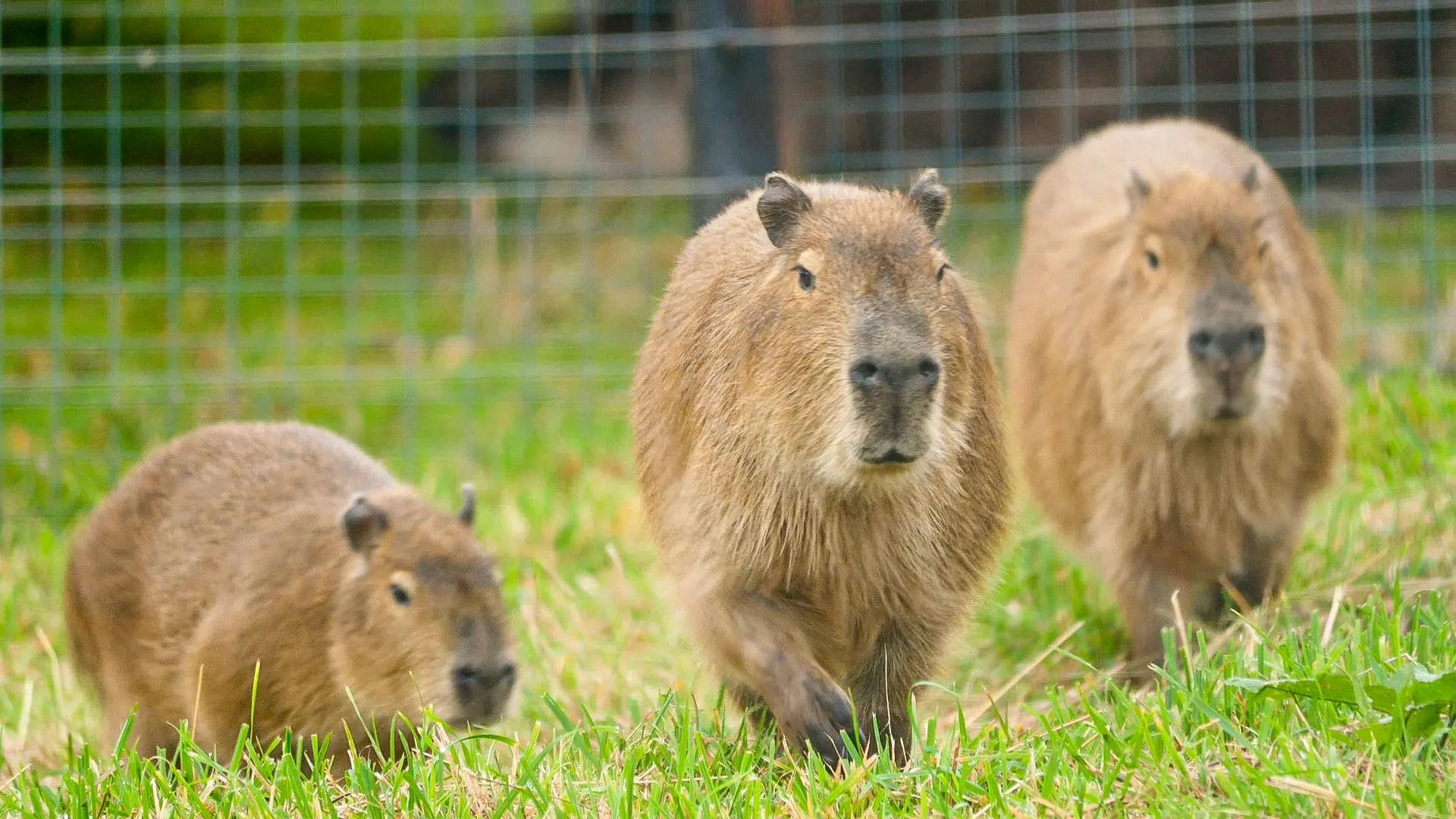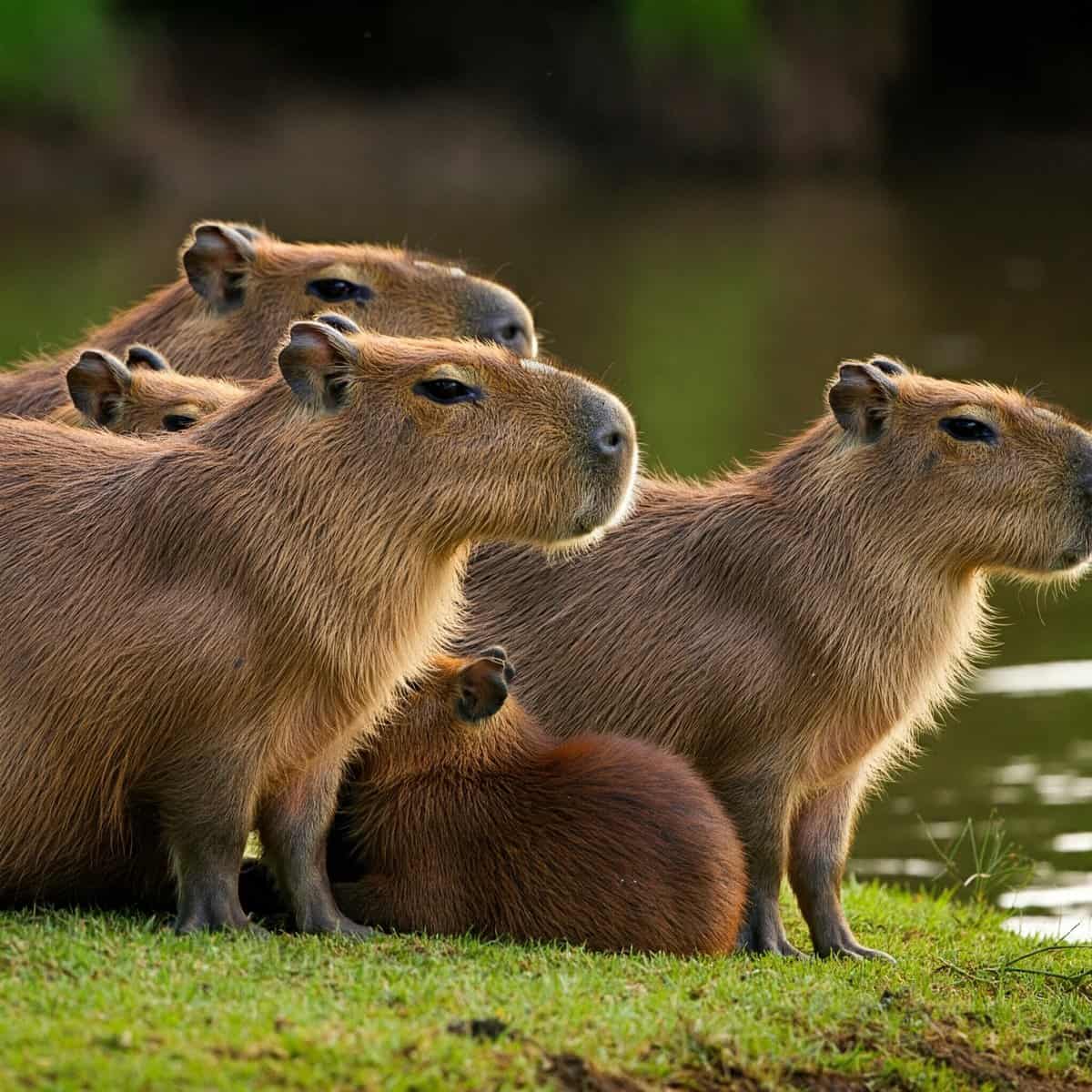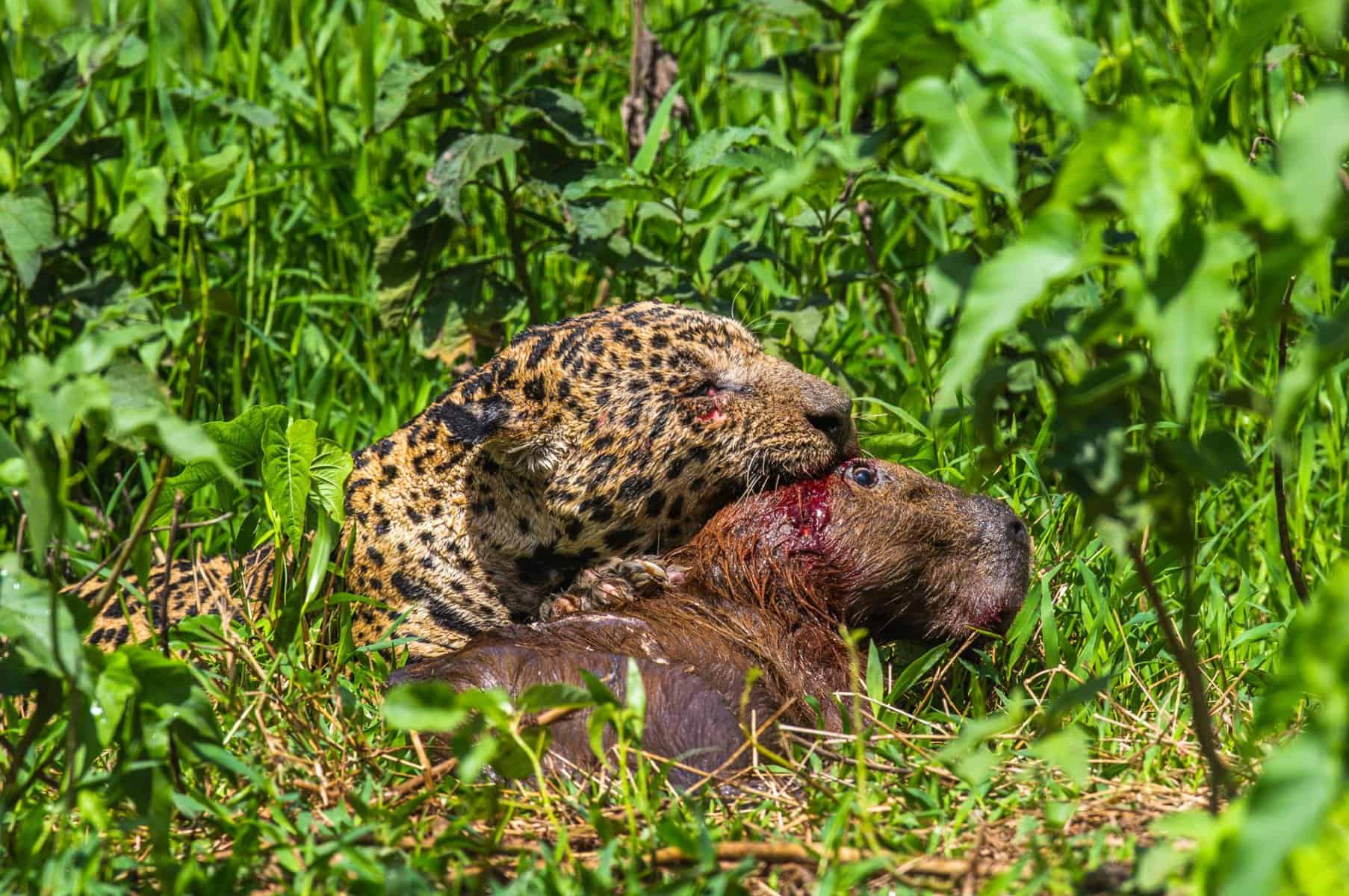The Secret to Capybaras’ Friendliness: Exploring the Science Behind Their Sociable Nature
Capybaras, the largest rodents in the world, are fascinating creatures that are native to South America. They are known for their semi-aquatic lifestyle and can be found in a variety of habitats, including rivers, lakes, and marshes.
Capybaras are herbivores and primarily feed on grasses and aquatic plants. They are well-adapted to their environment, with webbed feet that make them excellent swimmers and a thick, waterproof coat that helps them regulate their body temperature.
Capybaras are highly social animals and are often found in groups, known as herds, which can consist of up to 100 individuals. These unique creatures have captured the interest of people around the world and have even been domesticated in some regions for their gentle nature and potential therapeutic benefits.
The Social Nature of Capybaras
Capybaras are incredibly social animals and form strong bonds within their herds. They are known for their peaceful and harmonious interactions with one another, often engaging in grooming and vocal communication to maintain social cohesion.
Within the herd, there is a clear hierarchy, with dominant individuals asserting their authority through vocalizations and physical displays. Despite this hierarchy, capybaras are generally non-aggressive and will often share resources such as food and resting spots.
Their social nature extends beyond their own species, as capybaras have been observed forming symbiotic relationships with other animals, such as birds and caimans, who benefit from the capybaras’ ability to detect predators and the capybaras benefit from the protection provided by these other animals.
Capybaras are also known for their strong parental instincts, with both males and females taking an active role in caring for their young. This social behavior is a key aspect of capybara life and plays a crucial role in their survival in the wild.
Capybaras as Prey Animals
Despite their large size and strong social bonds, capybaras are still vulnerable to predation by a variety of animals, including jaguars, anacondas, and caimans. Their semi-aquatic lifestyle makes them particularly susceptible to predation, as they often rely on water for protection from land-based predators.
However, capybaras have developed several strategies to avoid becoming prey, including their highly developed senses of hearing and smell, which allow them to detect predators from a distance. Additionally, their large herd sizes provide safety in numbers, as more individuals means a greater chance of detecting and evading predators.
Capybaras also rely on their strong swimming abilities to escape from predators, often seeking refuge in water when threatened. Despite these adaptations, predation remains a significant threat to capybara populations, particularly in areas where human activity has disrupted their natural habitats.
The Role of Capybaras in Their Ecosystem
Capybaras play a crucial role in their ecosystems as both herbivores and prey animals. As herbivores, they help to control plant growth and maintain the balance of their habitats by consuming large quantities of grasses and aquatic plants. This grazing behavior can have a significant impact on the structure and composition of the vegetation in their environment, influencing the abundance of other species that rely on these plants for food and shelter.
As prey animals, capybaras provide a vital food source for a wide range of predators, helping to sustain the populations of carnivorous animals in their ecosystems. Their presence also influences the behavior of other species, such as birds and reptiles, who may benefit from the protection provided by the capybaras’ alertness to potential threats.
Overall, capybaras play a complex and important role in maintaining the balance of their ecosystems, making them a keystone species in many South American habitats.
Domestication and Interaction with Humans
Capybaras have been domesticated in some regions for their gentle nature and potential therapeutic benefits. In parts of South America, capybaras are kept as pets or used for meat and leather production. Their docile temperament makes them relatively easy to handle and train, leading to their popularity as domesticated animals.
In addition to their use as livestock, capybaras have also been used in various therapeutic settings due to their calming presence and social nature. Some facilities offer “capybara therapy,” where individuals can interact with these gentle creatures as a form of stress relief or emotional support.
However, the domestication of capybaras has raised concerns about the impact on wild populations and the ethical treatment of these animals. As human development continues to encroach on their natural habitats, it is important to consider the welfare of both wild and domesticated capybaras.
Capybaras as Therapy Animals
Capybaras have gained attention for their potential therapeutic benefits in various settings. Their calm demeanor and social nature make them well-suited for interacting with humans in therapeutic environments. Some facilities offer “capybara therapy,” where individuals can spend time with these gentle creatures as a form of stress relief or emotional support.
Research has shown that interacting with animals can have a positive impact on mental health, reducing stress and anxiety while promoting feelings of relaxation and well-being. Capybaras, with their gentle nature and non-threatening presence, are particularly well-suited for this type of therapy.
In addition to individual therapy sessions, capybaras have also been used in educational programs and animal-assisted therapy for children with special needs. Their unique characteristics make them valuable assets in promoting emotional well-being and social development.
Conservation and Protection of Capybaras
As human activity continues to encroach on their natural habitats, capybaras face increasing threats to their survival. Habitat loss, hunting, and competition with livestock for resources all pose significant challenges to capybara populations.
Conservation efforts are crucial for protecting these unique creatures and preserving their role in South American ecosystems. This includes measures to protect their natural habitats, regulate hunting practices, and promote sustainable coexistence between capybaras and human communities.
In addition to conservation efforts, raising awareness about the importance of capybaras in their ecosystems is essential for ensuring their long-term survival. By understanding the complex role that capybaras play in maintaining the balance of their habitats, we can work towards creating a sustainable future for these remarkable animals.
In conclusion, capybaras are fascinating creatures with a rich social life and important ecological significance. From their unique adaptations as prey animals to their potential as therapy animals, capybaras continue to capture the interest of people around the world. By understanding and appreciating the complex role that capybaras play in their ecosystems, we can work towards ensuring their conservation and protection for generations to come.





